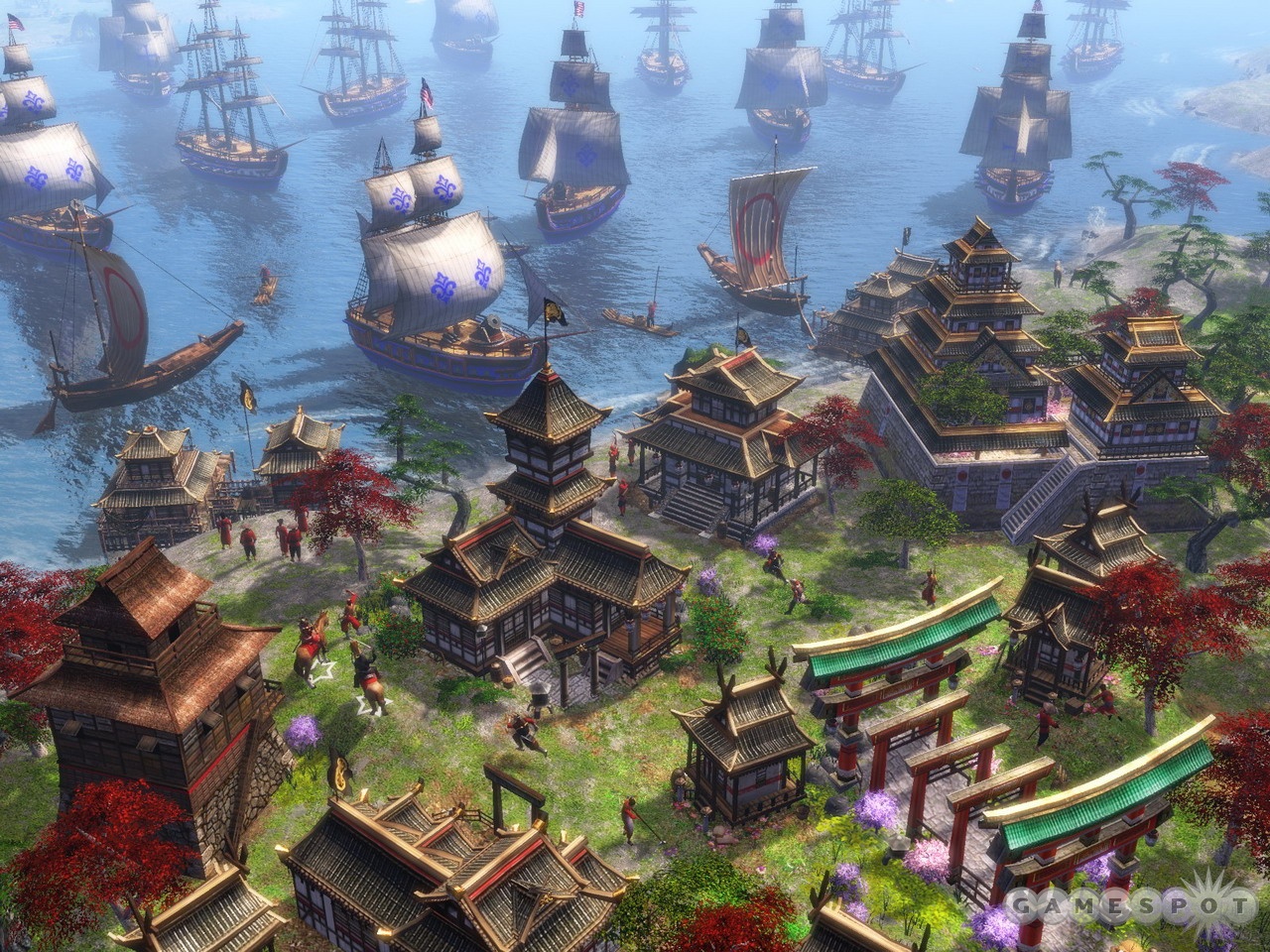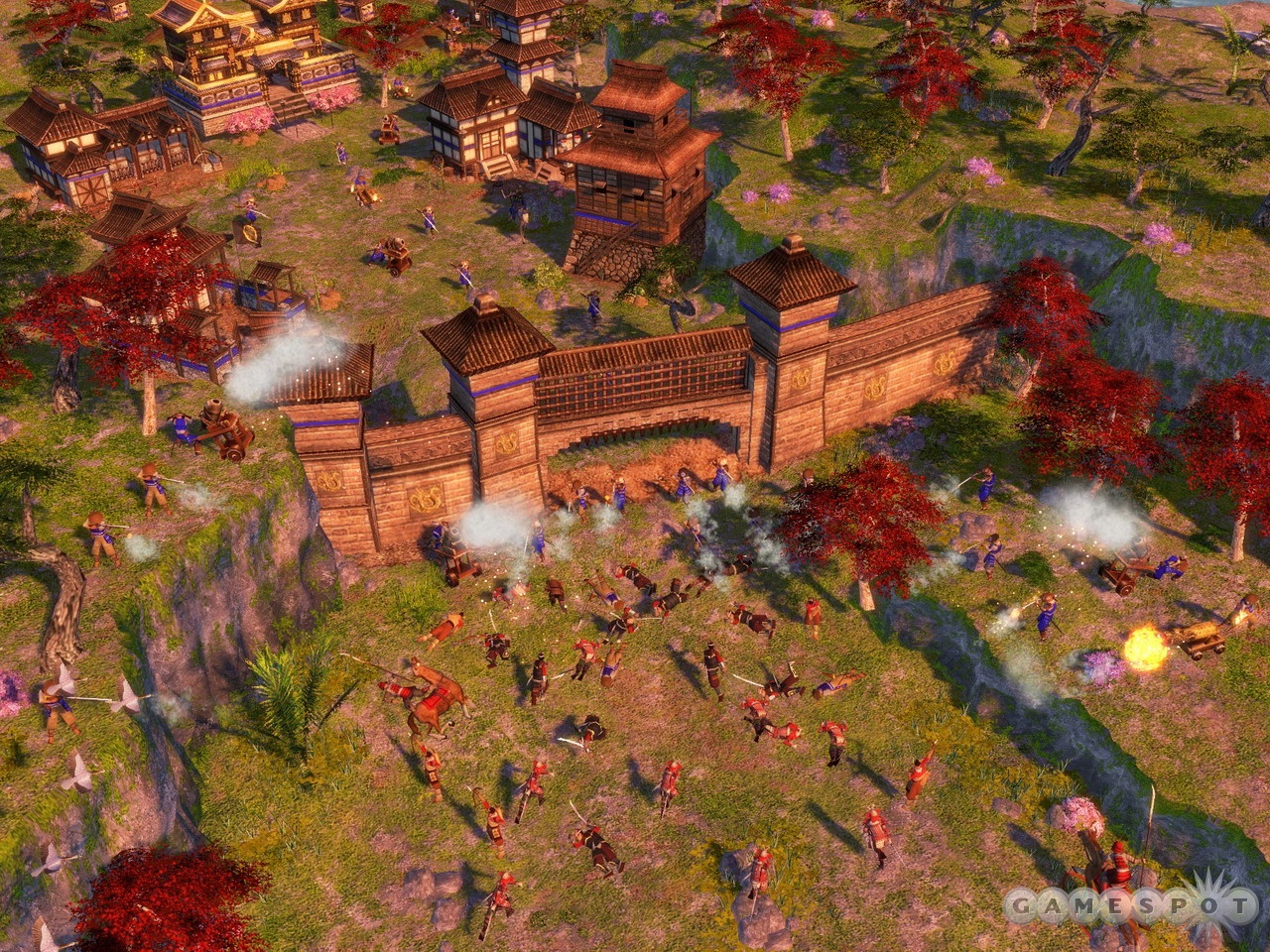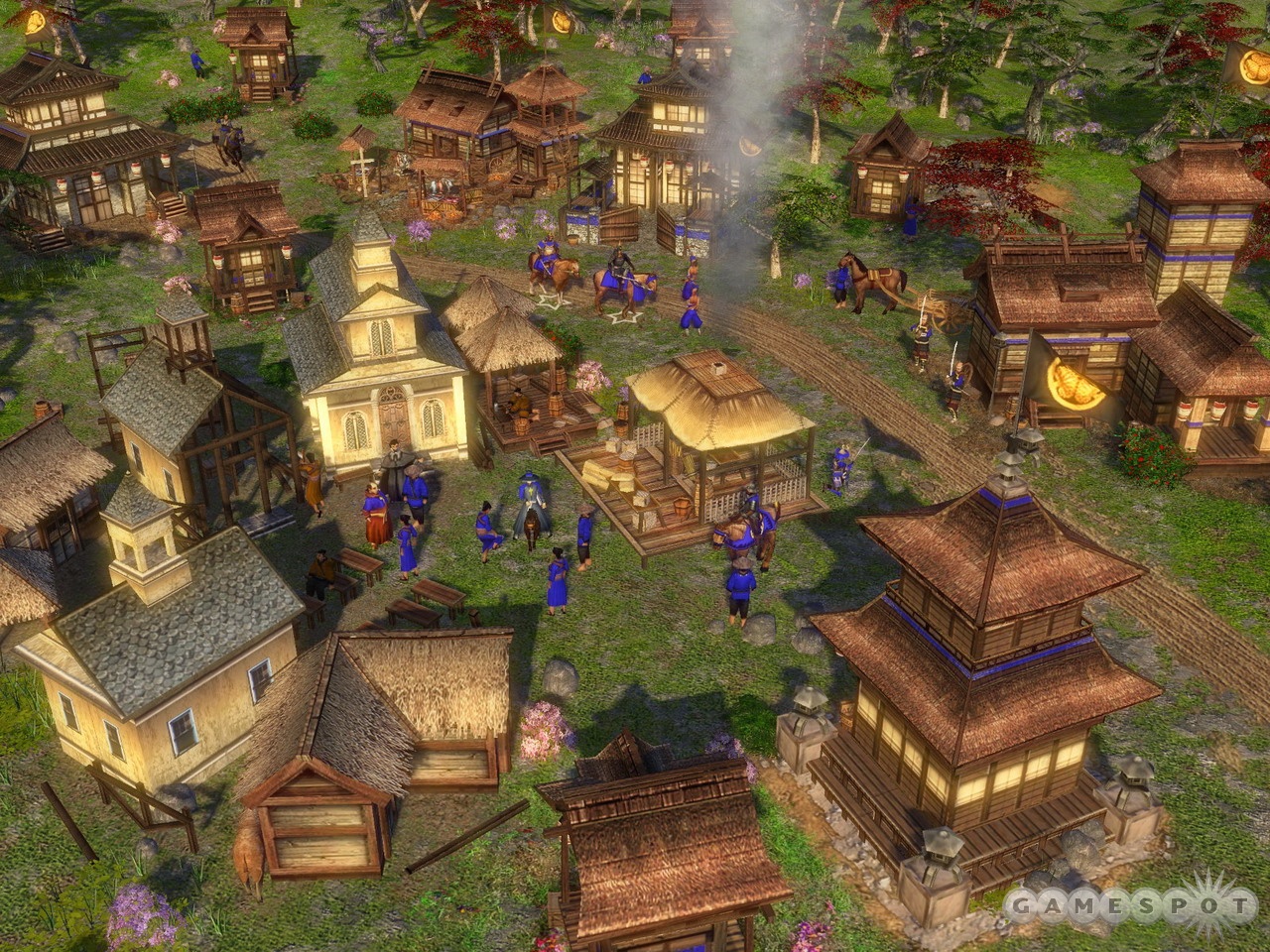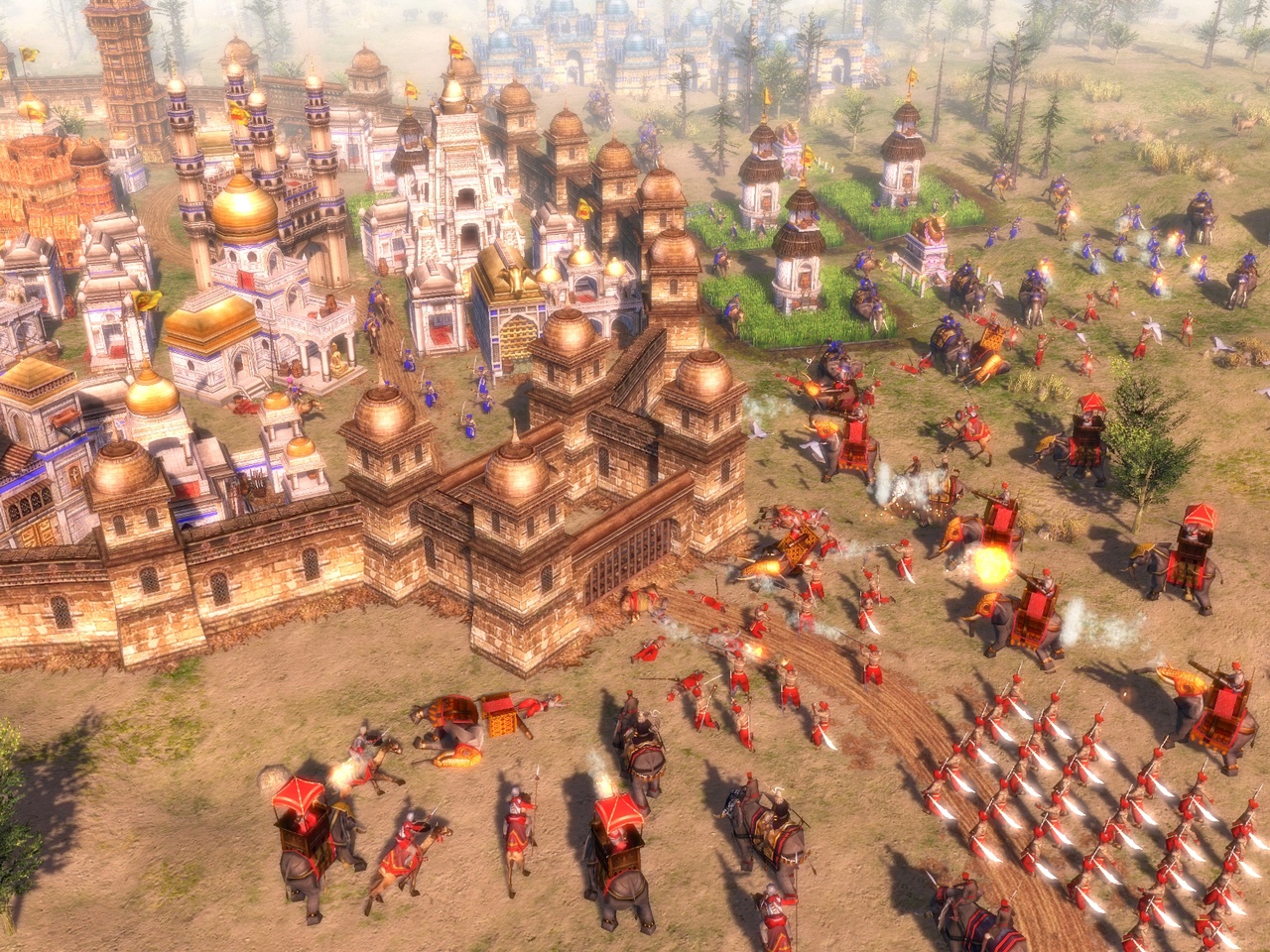Age of Empires III: The Asian Dynasties Updated Q&A - Details on the Japanese
Famed designer and Big Huge Games creative director Brian Reynolds breaks down the new Japanese nation in this upcoming expansion pack.
When it comes to real-time strategy, few franchises are larger than the Age of Empires series. Famed for blending history with RTS gameplay, Age of Empires games have allowed you to take civilizations or nations from the past and then guide them through the struggle to survive and thrive. The game centers on the concept of building a city, an economy, and then an army, which can be used to defend your borders or to expand them.

2005's Age of Empires III focused on the age of colonization in the New World. As such, it featured mainly European civilizations. Native American civilizations were added in The WarChiefs expansion, released last year. Now Big Huge Games, the developer of Rise of Nations and Rise of Legends, is currently working on The Asian Dynasties, the second expansion for the game. This will shift the focus more to the Far East and introduce a number of key Asian civilizations. To get the very first details on the new Japanese faction, we turned to Brian Reynolds, CEO and creative director of Big Huge Games. The expansion will ship later this year.
GameSpot: Give us an update on the expansion's development. What aspects of the game is the team working on at the moment?
Brian Reynolds: We've just reached content freeze, meaning that all of the art, units, maps, scenarios, and other types of content are complete. We're now mostly working on final balancing of the new units and civs for multiplayer and polishing the game for release.
GS: Give us an overview of the Japanese faction. What are the faction's major strengths and weaknesses? What unique features or abilities does it bring to the table?
BR: Japan's major strengths include its extremely powerful military units (such as samurai), but these units are also expensive, so you'll need a good economy. One interesting Japanese power is that most home-city cards can be sent twice. An even more dramatic difference from other nations is that in reflection of restrictions on hunting and eating meat other than fish--restrictions which remained in place for hundreds of years in Japan--the Japanese are not allowed to acquire food from hunting or herding.
GS: Could you explain how the team used real-world history to inform the design of the Japanese faction? How in-depth will history figure into their design? What major historical events will be reflected in the faction's design?

BR: Japanese history figured strongly in our design of the civilization, from military units to technologies to home-city cards, and especially of course, the single-player campaign. A particularly good example is the Japanese ban on hunting and eating meat other than fish, which was a result of the influence of Buddhism and had been in place for centuries as of the period of this game. At the same time, there are shrines in Japan where tame deer roam free, so we allowed shrines in the game to attract nearby animals to provide a gather bonus.
GS: Give us a rundown of the Japanese army. What are the most unique units at the Japanese faction's disposal? How do they help determine the faction's best strategies in battle?
BR: Japanese units, individually, tend to be expensive but powerful. The backbone of the Japanese army is the samurai warrior, whose powerful melee attack deals area damage to nearby units. The special hatamoto samurai, available from the consulate, is even more powerful than ronin mercenaries.
The most strategically powerful unit in the Japanese force is the daimyo, a special commander unit available from home-city shipments and one of the wonders. The best thing about a daimyo is that he's a mobile unit who can receive home-city shipments. So if you're careful not to get him killed, he can bring reinforcements right into the middle of the battle! The daimyo can also train units and provides a bonus to units fighting nearby. And the most powerful daimyo of all is the shogun whom you get late in the game.
GS: Tell us about the faction's economic strategy. What's the best way for Japan to be victorious by building up an economic infrastructure--if that's even a good strategy to begin with?

BR: It's all about the shrines for the Japanese. Shrines serve both as housing and as resource generators. Use your monks to build them around the map, being sure to put them nearby animals that can be hunted. Shrines also attract wild animals (for example, deer) and herd animals: Each animal that gathers at a shrine adds to the resources generated by the shrine. For your first wonder, consider the Toshogu Shrine, which enhances other shrines and itself acts as a large shrine. There are also a few cards that help out, such as heavenly kami, which increases shrine line of sight and hit points, reduces their cost, and increases the amount of resources that they generate. At the consulate, be sure to ally with the Dutch, who provide you with a coin trickle and will ship you a bank.
GS: What can you tell us about the Japanese capital city and its card abilities? What are some of the unique new ways players can customize their home city with this faction?
BR: One of the first things you'll notice about the Japanese home city is that most of the cards can be shipped twice--a special Japanese advantage. It's also important to ship a daimyo card, especially when you're on the offensive. Like other Asian civs, Japan does not have the "3 settlers" card that's usually so popular as a first shipment, so you'll have to decide whether to ship the "2 villagers" card (with the option to ship it twice) or try a different opening strategy. Japan also has access to one of the most fearsome mixes of mercenary units in the game.
GS: What can you tell us about the single-player experience for the Japanese faction? What part of history will it cover and what kinds of history will players themselves be making?
BR: The Japanese campaign takes place in the late 16th century and deals with the establishment of the Tokugawa Shogunate. You'll control Shogun Tokugawa and his most loyal retainers as they seek to bring an end to the Warring States period and unify Japan.
GS: How does the faction fare in multiplayer? Is this a quick-starting nation or one that benefits from slower buildup? Does it work particularly well in larger multiplayer games when teamed up with certain other factions?

BR: Japan is an excellent civ for multiplayer games. Japan has a fairly robust start that can be used to rush the enemy with the help of your daimyo or to economic boom to the later ages with your shrines. A daimyo is practically essential for a rush since the ability to train troops and send shipments to a mobile unit is priceless. Besides that, the daimyo is a pretty good fighter and provides an attack bonus to nearby troops. Economically, the Japanese have one of the best economies in the game. Their shrines not only boost their resource production but also allow them to assign more of their population slots to military, instead of economic units. This leaves plenty of room for massive armies of samurai, which is sure to be a favorite unit choice of players.
In team games, Japan's allies will be very pleased by the informers power, which is found on the Great Buddha wonder. It reveals all enemy lines of sight for a short time, allowing you to see where your opponents are strong and where they are weak. Shrine placement can be a bit tricky in team games though, since any animals that gather around a shrine can't be hunted until the shrine is destroyed. The Japanese also have some team shipments that [can] be appreciated by their allies, such as fishing boats, cheaper unit upgrades, and ninjas.
GS: Finally, is there anything else you'd like to add about the Japanese faction or about Age of Empires III: The Asian Dynasties in general?
BR: I think your questions have covered it well!
GS: Thank you, Brian.
Got a news tip or want to contact us directly? Email news@gamespot.com
Join the conversation